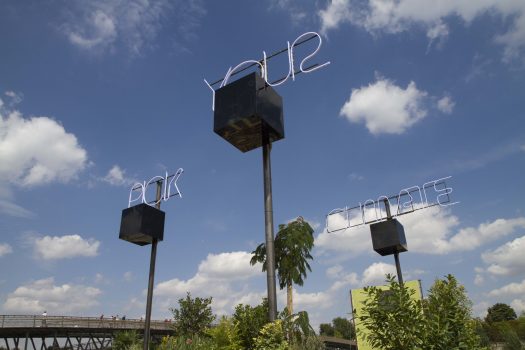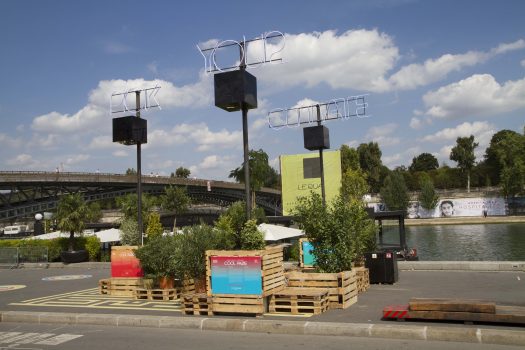Cool Paris is a demonstration project that looks at how to reverse climate change in cities. Inspired by cutting edge nanotech research from Stanford University, the team – composed by Carlo Ratti Associati and Transsolar – wanted to exhibit how new photonic membranes that reflect solar radiation could help reduce extreme temperatures in our cities, at zero energy cost and zero water demand. The project was unveiled in Paris in September 2015 (in the city center along the Berges de Seine in front of Musée d’Orsay). The demonstrator, developed with the Mairie de Paris, is part of a series of events under the banner of “Paris Climat 2015” and the United Nations Framework on Climate Change’s Conference of Parties (COP21).
Greenhouses are enclosures that let in the sun’s short wave radiation, while trapping long wave radiation. As a result, temperatures increase. Cool Paris works exactly in the opposite way: finding a material that would reflect incoming short wave radiation from the sun, while letting the earth radiate to outer space. The result would be a net cooling of the city – something we could call a cool-house.
The demonstration project in Paris explores different types of membranes and uses advanced computer simulations to evaluate what the overall effect would be in Paris. The challenge at hand is to develop climate remediation solutions that ensure ubiquitous comfort. As an example, if one were to wrap Paris’s Île de la Cité with a photonic membrane, its temperature would be 5-10 degrees lower. Such an intervention might not be practical – but covering courtyards and public plazas might be a feasible option.
The Paris demonstrator showcases 3 different solutions to create 3 different climate modification options, namely: Greenhouse, Coolhouse and Treehouse. The results are shown in real time on the 3 displays on site and will be added on the website www.cool- paris.fr following the exhibition to spark a wider conversation about the different future possibilities. The three displays use the UTCI (Universal Thermal Climate Index) to estimate how the average person would feel, taking into account: solar radiation, wind speed, mean radiant temperature of the area, ambient air temperature, relative humidity and typical values for a person’s clothing factor and activity. Results are calculated based on weather from Weather Underground and updated every 15 minutes.





